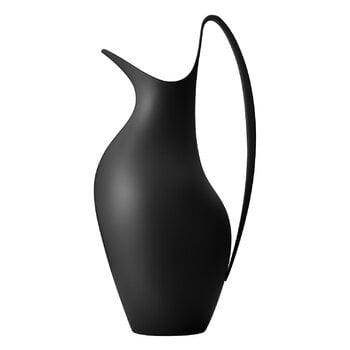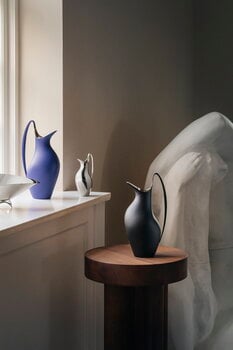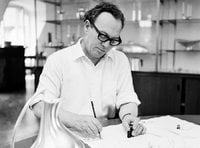Georg Jensen's HK pitcher is one of the most famous works of the Danish designer Georg Jensen. The elegant pitcher was first formed in 1952. It is spare but sensuous, with an elegantly extended handle and exaggerated lip. The iconic jug is decorated with a stylish light lilac colour that will brighten up both your everyday and festive table settings. The HK pitcher is made of stainless steel.
Of all the designers to work with Georg Jensen through the years, Henning Koppel was among the most highly regarded. His designs played an important role in influencing the signature look of Georg Jensen, particularly in the second half of the 20th century. The designer had trained as a sculptor before turning his attention to jewellery, hollowware and cutlery. Georg Jensen began as a silversmith; this collection is a modern interpretation of the legacy of excellent craftsmanship that dates from the very beginning.







